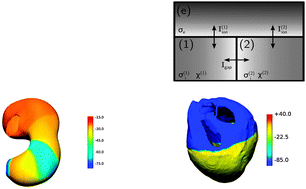Modelling tissue electrophysiology with multiple cell types: applications of the extended bidomain framework
Abstract
The bidomain framework has been extensively used to model tissue electrophysiology in a variety of applications. One limitation of the bidomain model is that it describes the activity of only one cell type interacting with the extracellular space. If more than one cell type contributes to the tissue electrophysiology, then the bidomain model is not sufficient. Recently, evidence has suggested that this is the case for at least two important applications: cardiac and gastrointestinal tissue electrophysiology. In the heart, fibroblasts ubiquitously interact with myocytes and are believed to play an important role in the organ electrophysiology. Along the GI tract, interstitial cells of Cajal (ICC) generate electrical waves that are passed on to surrounding smooth muscle cells (SMC), which are interconnected with the ICC and with each other. Because of the contribution of more than one cell type to the overall organ electrophysiology, investigators in different fields have independently proposed similar extensions of the bidomain model to incorporate multiple cell types and tested it on simplified geometries. In this paper, we provide a general derivation of such an extended bidomain framework applicable to any tissue and provide a generic and efficient implementation applicable to any geometry. Proof-of-concept results of tissue electrophysiology on realistic 3D organ geometries using the extended bidomain framework are presented for the heart and the stomach.


 Please wait while we load your content...
Please wait while we load your content...